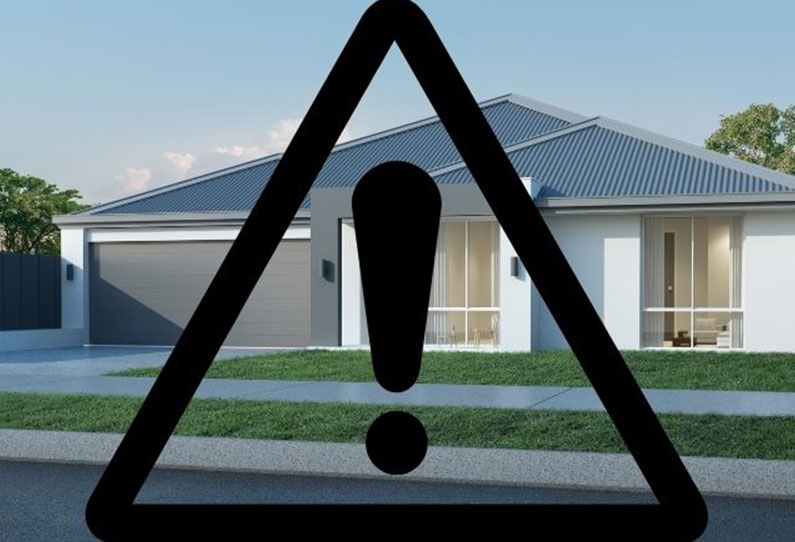Environmental Stigmas
Abandoned Property:
- Impact: May raise concerns about safety, maintenance, and potential legal issues.
- Mitigation: Highlight any recent renovations or plans for future improvements. Emphasize any ongoing maintenance or security measures.
Extended Vacancy:
- Impact: Can suggest problems with the property or market, or raise concerns about hidden issues.
- Mitigation: Provide detailed information about any recent upgrades or changes. Offer a thorough inspection report.
Foreclosure:
- Impact: May be associated with financial distress or maintenance issues.
- Mitigation: Focus on the property’s features and any recent repairs or upgrades. Be transparent about the foreclosure process and current condition.
Natural Disaster Damage:
- Impact: Could affect structural integrity and create concerns about safety.
- Mitigation: Present evidence of repairs and upgrades made post-disaster. Provide inspection reports and warranties for any work done.
Criminal Activities:
- Impact: May create fears about safety and neighborhood reputation.
- Mitigation: Highlight improvements to security and any positive changes in the neighborhood. Provide information on community efforts to improve safety.
Hazardous Materials:
- Impact: Raises serious health and safety concerns.
- Mitigation: Ensure that remediation has been completed to industry standards. Provide certificates and reports from environmental safety inspections.
Location Stigmas
T-Junction:
- Impact: Can lead to increased noise and traffic, and possible safety concerns.
- Mitigation: Emphasize benefits like increased visibility and easy access. Offer solutions to mitigate noise or traffic, if applicable.
Backyard on T-Junction:
- Impact: Potentially less privacy and more exposure to traffic-related issues.
- Mitigation: Focus on landscaping or fencing that provides privacy. Highlight the functionality or design of the backyard space.
Nearby Electrical Plant:
- Impact: Potential noise and concerns about safety or environmental impact.
- Mitigation: Provide information on safety regulations and noise mitigation measures. Emphasize other benefits of the property.
Electrical Box or Transformer:
- Impact: Possible aesthetic concerns or noise.
- Mitigation: Highlight the property’s benefits and any visual barriers or landscaping that reduces the impact.
Busy Street:
- Impact: Increased noise and traffic can be a drawback.
- Mitigation: Point out advantages like easy access to amenities or improved visibility. Discuss any soundproofing measures or features.
Active Railway or Skytrain:
- Impact: Potential noise and disruption.
- Mitigation: Emphasize proximity to transportation as a convenience. Provide details on soundproofing or the frequency of services.
Industrial Area:
- Impact: Concerns about noise, pollution, and aesthetics.
- Mitigation: Focus on any positive aspects, such as proximity to businesses or reduced commute times. Discuss any environmental regulations and protections in place.
Garbage Dump:
- Impact: Potential for unpleasant odors and health concerns.
- Mitigation: Emphasize any steps taken to address odor issues. Highlight the property’s other advantages and any local improvements.
Sewage Treatment Plant:
- Impact: Possible odors and health concerns.
- Mitigation: Provide information on any odor control measures and environmental regulations. Focus on the property’s features and benefits.
Neighborhood Crime:
- Impact: Concerns about safety and security.
- Mitigation: Highlight any recent improvements in community safety and security measures. Discuss neighborhood watch programs or community engagement.
Flood-Prone Area:
- Impact: Risk of flooding and potential damage.
- Mitigation: Provide details on flood prevention measures and any past flood history. Highlight any insurance coverage or improvements made to reduce risk.
When dealing with these stigmas, transparency, and proactive communication are key. Providing comprehensive information, offering solutions to potential concerns, and focusing on the positives can help mitigate the impact of these stigmas on property value and desirability.
Stigmatized Properties: Key Points
Impact on Sale and Value:
- Economic and Crime Issues: Properties in economically depressed or high-crime areas often sell for less due to perceived risks.
- Repairs and Maintenance: Properties needing repairs may be priced lower but can attract buyers looking for investment opportunities.
- Legal Disclosure: While not always legally required, ethical disclosure of stigmas (e.g., haunted, past illegal activities) can build trust and avoid legal issues.
Strategies for Sellers:
- Price Realistically: Set a price reflecting the stigma and highlight any improvements or unique features.
- Invest in Repairs: Address necessary repairs to increase appeal.
- Be Transparent: Disclose known issues to build trust and avoid potential disputes.
Strategies for Buyers:
- Do Your Research: Investigate the neighborhood and property condition.
- Negotiate: Use the stigma as a bargaining tool to lower the price.
- Evaluate Potential: Consider the long-term investment potential of the property.
Outcome: Sellers can sell quickly at a reduced price, while buyers get a discounted property with potential for future gains.















